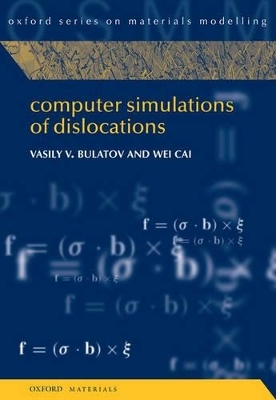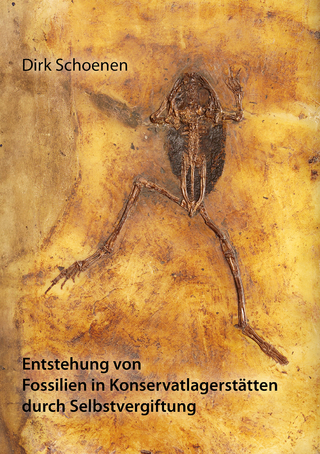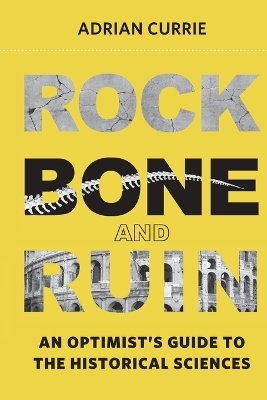
Computer Simulations of Dislocations
Oxford University Press (Verlag)
978-0-19-852614-8 (ISBN)
This book presents a broad collection of models and computational methods - from atomistic to continuum - applied to crystal dislocations. Its purpose is to help students and researchers in computational materials sciences to acquire practical knowledge of relevant simulation methods. Because their behavior spans multiple length and time scales, crystal dislocations present a common ground for an in-depth discussion of a variety of computational approaches, including their relative strengths, weaknesses and inter-connections. The details of the covered methods are presented in the form of "numerical recipes" and illustrated by case studies. A suite of simulation codes and data files is made available on the book's website to help the reader "to learn-by-doing" through solving the exercise problems offered in the book.
Vasily V Bulatov, Lawrence Livermore National Laboratory Education: B. Sc., theoretical physics, Moscow Physical Engineering Inst. (1979) Ph. D., materials physics, USSR Academy of Sciences (1986) Appointments: Senior scientist, Inst. of Chemical Physics, Moscow (1997) Research scientist, Massachusetts Institute of Technology (1990-1998) Visiting scientist, Harvard University (1996-1997) Staff scientist, senior scientist, Lawrence Livermore National Laboratory (1999-present) Awards: Edward Teller Fellow (2006) Fellow of the American Physical Society (2005) Alcoa Foundation Award (1996), UK Institute of Physics fellow (2001) William and Mary Greve Foundation fellow (1990), Wei Cai, Department of Mechanical Engineering, Stanford University Education: B.Sc., optoelectronics, Huazhong University, PRC (1995) Ph. D., nuclear engineering, Massachusetts Institute of Technology (2001) Appointments: Lawrence Fellow, Lawrence Livermore National Laboratory (2001-2004) Assistant Professor, Stanford University (2004-present) Awards: NSF Career Award (2006) Manson Benedict Fellow, Department of Nuclear Engineering, MIT (1999) Graduate Student Award, Materials Research Society (2000) The Lawrence Fellowship, Lawrence Livermore National Laboratory (2001) Presidential Early Career Award for Scientists and Engineers (2004) Frederick E. Terman Fellowship, Stanford University (2004-2007)
1. Introduction to crystal dislocations ; Atomistic Models ; 2. Fundamentals of atomistic simulations ; 3. Case study of static simulation ; 4. Case study of dynamic simulation ; 5. More about periodic boundary conditions ; 6. Free energy calculations ; 7. Finding transition pathways ; PART 2 ; Continuum Models ; 8. Peierls-Nabarro model of dislocations ; 9. Kinetic Monte Carlo method ; 10. Line Dislocation Dynamics ; 11. The Phase Field method
| Erscheint lt. Verlag | 2.11.2006 |
|---|---|
| Reihe/Serie | Oxford Series on Materials Modelling |
| Zusatzinfo | 88 line drawings, 4 halftones |
| Verlagsort | Oxford |
| Sprache | englisch |
| Maße | 170 x 245 mm |
| Gewicht | 676 g |
| Themenwelt | Mathematik / Informatik ► Informatik |
| Mathematik / Informatik ► Mathematik | |
| Naturwissenschaften ► Geowissenschaften ► Mineralogie / Paläontologie | |
| Naturwissenschaften ► Physik / Astronomie ► Thermodynamik | |
| Technik ► Maschinenbau | |
| ISBN-10 | 0-19-852614-8 / 0198526148 |
| ISBN-13 | 978-0-19-852614-8 / 9780198526148 |
| Zustand | Neuware |
| Haben Sie eine Frage zum Produkt? |
aus dem Bereich


